Ancient Artifacts that Challenge Modern Thinking
THE ANTIKYTHERA MECHANISM
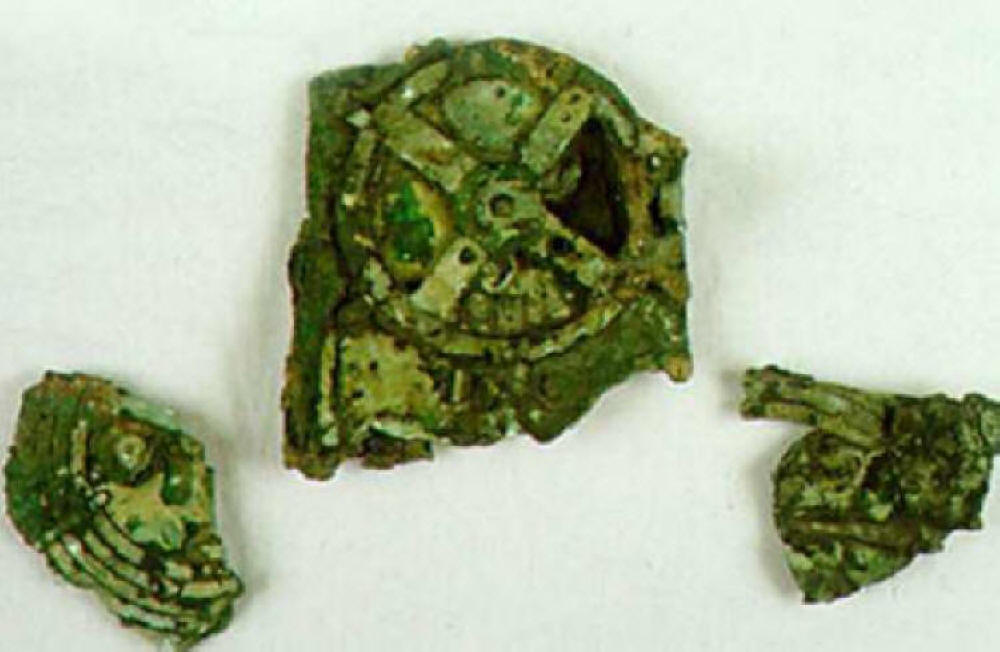
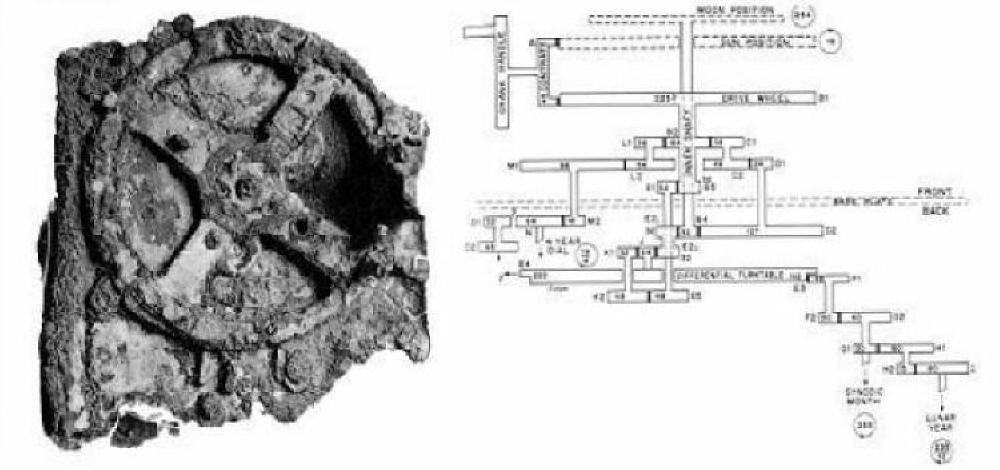
THE BATTERY OF BABYLON
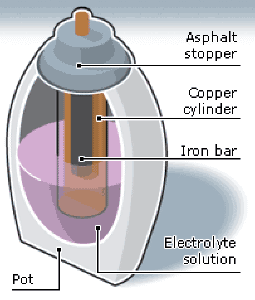
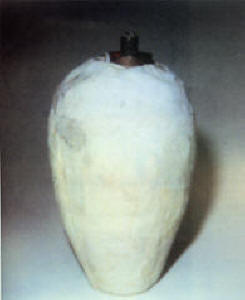
This battery was unearthed in Khujut Rabu, in the ruins of a Parthian village outside Baghdad in 1938 by German archaeologist Wilhelm Konig. It is a five-inch-long (13 cm) clay jar containing a copper cylinder and its edge was soldered with a 60-40 lead/tin alloy; the bottom was capped with a crimped-in copper disk and held in place with asphalt or bitumen. Another insulating layer of asphalt sealed the top and also protected an iron bar suspended into the center of the cylinder. This is known as the Baghdad Battery and is about 2,000 years old. A dozen other similar batteries were unearthed in Iraq.
Most sources date the batteries to around 200 BC - in the Parthian era, circa 250 BC to AD 225. However the Parthians were skilled warriors rather than technologists and their scientific achievements remain largely unknown. It would appear that they inherited these batteries from one of the earliest known civilizations. According to experts, after being filled with an acid or alkaline liquid (like lemon juice) the device could create an electric charge. It is believed that this old battery might have been used to electroplate silver, but this is only one theory. It’s important to emphasize that electric batteries were (supposedly) not invented until 1799 by Alessandro Volta.
MYSTERIOUS SCREW in CHINESE STONE
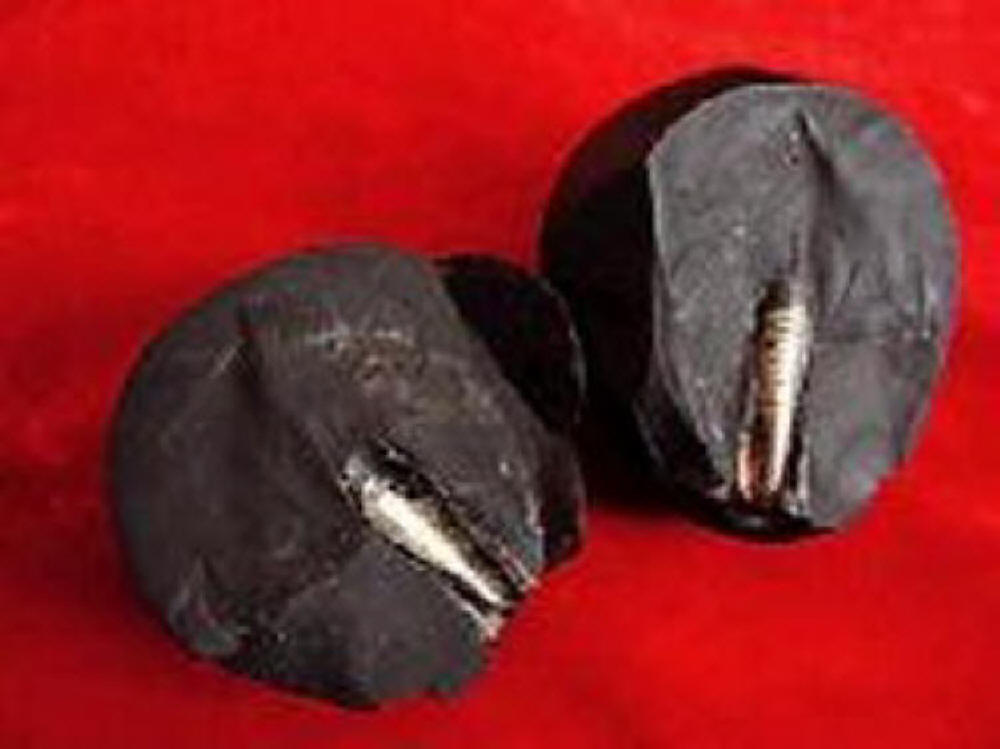
An uncommon stone imbedded with screw-threaded metal bar from a collector in Lanzhou, Mr. Zhilin Wang. He found this stone on a field research trip to the Mazong Mountain area located on the border of Gansu and Xijiang provinces. The pear-shaped stone is extremely hard and has a mysterious black color. It is about 8 x 7 cm and weighs 466 grams. The most surprising as[ect of the stone is the imbedded 6 cm cone-shaped metal bar which bears clear screw threads.
The stone is one of the most valuable in China and in the world. There are many hypotheses about the formation of this stone, but all seem incredible. The screw-threaded metal bar is tightly enclosed in the black lithic material. Moreover, the screw thread width remains consistent from the thick end to the thin end, instead of varying due to the growth of organisms. Is this a relic from a prehistoric civilization?
ANCIENT GLIDER FROM EGYPT
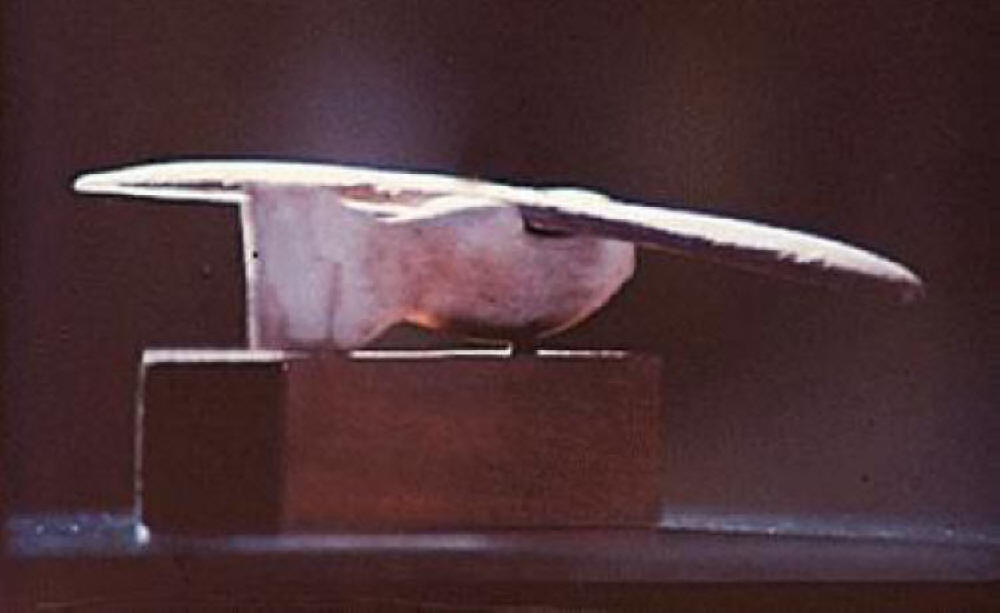
In 1898 a small wooden, winged object was found in the tomb of Pa-di-Imen in north Saqqara, Egypt. The model has the exact proportions of a very advanced form of "pusher-glider"; however it was identified as a "bird model". Made of very light sycamore the craft weighs 0.5 oz. with straight and aerodynamically shaped wings spanning about 7 inches. It looks like modern-day aircraft though it is 2,000 years old. According to analysis the object is aerodynamically sound.
ABYDOS HELICOPTER
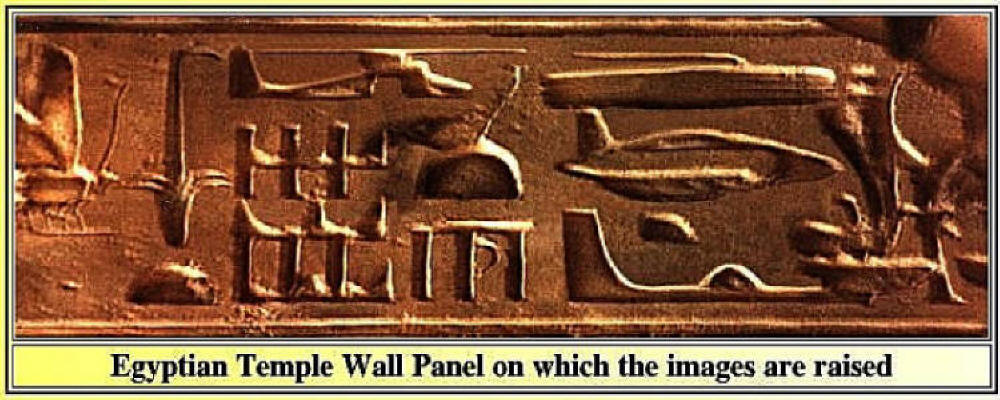
ANCIENT PLANES FROM SOUTH AMERICA
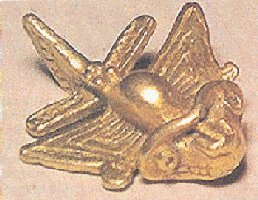
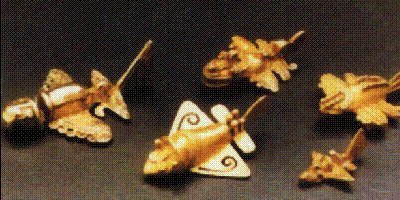
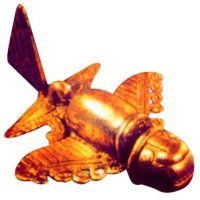
The mechanical-appearing features of this object suggest a highly sophisticated level of aerodynamics and construction. The objects are very old and small, approximately 2 inches long, made of gold and estimated to be AT LEAST 1,000 years old. According to archaeologists the artifacts depict animals and were classified as Sinu - a pre-Inca culture from A.D. 500 to 800. To aeronautical engineers these objects look more like airplanes with delta-shaped wings. So in 1997 they built scaled-up versions of the object to the exact specifications of the prototype with the simple addition of an engine and propeller. The flight test was successful. The radio controlled aircraft flew, performing airborne loops, rolls and other maneuvers, and then performed perfect landing.
According to Dr. Ivan Sanderson who studied the artifacts, these look too "mechanical", like an airplane - not a natural object. Other similar objects have been discovered in Costa Rica, Venezuela and Peru.
CRYSTAL SKULL UNEARTHED AT THE ANCIENT MAYAN CITY
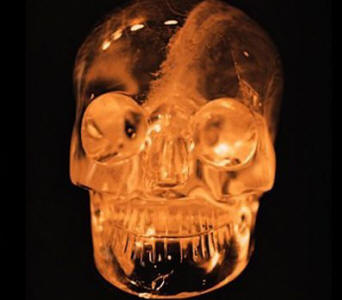
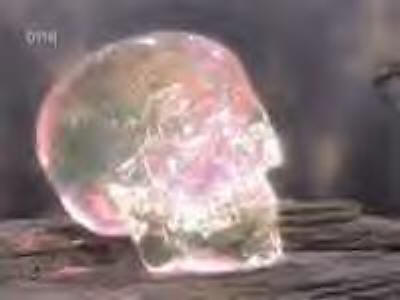
A human sized and shaped clear quartz skull, weighing 11.7 lbs in two pieces with a separate jaw, was discovered in Lubaantum (now in Belize) in 1924, in the ruins of a Mayan City by F. A. Mitchell-Hedges. This skull is currently near Toronto, Canada with Anna Mitchell-Hedges, his adopted daughter. The skull is an almost absolute copy of a human skull except it is more circular at the temples and has a handle-like form in the cheekbones. It's ancient. The amazing thing is that even under a microscope no tool marks can be found.
500,000 YEAR OLD SPARK PLUG - THE COSO ARTIFACT
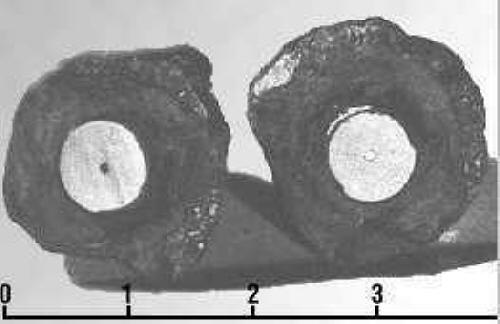
This was unearthed in the Coso Mountains, California, by someone looking for unusual rocks. One of these pieces of rock contained remains of some kind of device. Beneath the outer layer of hardened clay, pebbles and fossil inclusions was a hexagonal shaped layer of a substance resembling wood, softer than agate or jasper. This layer formed a casing around a three-quarter inch wide cylinder made of solid white porcelain or ceramic, and in the center of the cylinder is the two millimeter shaft of a shiny metal core, about .08 inch (2 millimeters) in diameter. Surrounding the ceramic cylinder are rings of copper, mostly corroded. Also embedded in the rock, though separate from the cylinder, are two more man-made items that look like a nail and a washer. The rock, in which the artifact resembling a spark plug was found, was dated to about 500,000 years old. Those who manufactured this artifact had to possess an advanced technology.
SPIRAL-SHAPED MICRO-OBJECTS FOUND IN RUSSIA
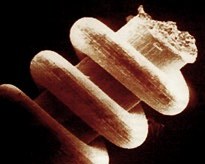
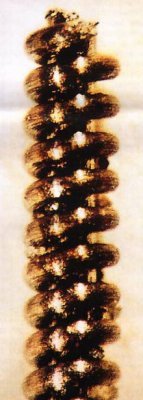
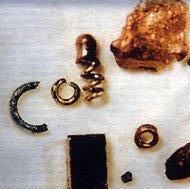
In the years 1991-1993, gold prospectors on the small river Narada on the eastern side of the Ural Mountains found unusual, mostly spiral-shaped objects. The size of these things ranges from a maximum of 3 cm (1.2 in.) down to an incredible 0.003 mm, about 1/10,000th of an inch! To date, these inexplicable artifacts have been found in their thousands at various sites near the rivers Narada, Kozhim, and Balbanyu, and also by two smaller streams named Vtvisty and Lapkhevozh, mostly at depths between 3 and 12 meters (10 and 40 ft.)
The spiral-form objects are composed of various metals: the larger ones are of copper, while the small and very small ones are of the rare metals tungsten and molybdenum. Tungsten has a high atomic weight, and is also very dense, with a melting point of 3410 deg. C (6100 deg. F). It is used principally for the hardening of special steels, and in unalloyed form for the filaments of light bulbs. Molybdenum also has a high density and a respectable melting point of 2650 deg. C (4740 deg. F). This metal too is used for hardening steels and giving them corrosion-
resistant properties, these being used principally for highly-stressed weapon parts and vehicle armor. All tests carried out to date these objects to around 20,000 years old...
THE FIVE ARCHAIC PLATONIC SOLIDS

Hundreds of carved stone spheres, roughly three inches in diameter, believed to date to around 2000 BC, have been found in Scotland. Some are carved with lines corresponding to the edges of regular polyhedra. Roughly half have 6 knobs --- like the one at right above --- but the others range from three to 160 knobs. The more mathematically regular ones do not appear to have had a special importance.
In addition to the 12-knob dodecahedral form shown in the center and just to its right above, there are also ones with 14 knobs, corresponding to a form with two opposite hexagons, each surrounded by six pentagons. Nonetheless, the dodecahedron appears here long before the Greeks wrote of it. The function of these stones is unknown and so it is unclear whether to list them under the category of ‘art’, but many are intricately carved with spirals or cross-hatching on the faces. The material varies from easily carved sandstone and serpentine to difficult hard granite and quartzite.
22,000-YEAR OLD TUSK CARVINGS UNCOVERED IN RUSSIA
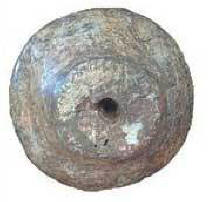
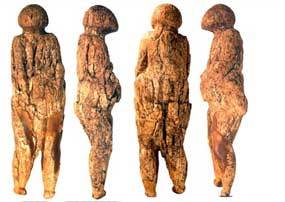
Left: Mysterious cone-shaped object carved from mammoth ivory.
Right: Human-looking figurines found at Zaraysk, Russia, carved from mammoth tusks.
About 93 miles southeast of Moscow, Russia is an Old Stone Age excavation at Zaraysk, where Russian scientists have discovered figurines and carvings on mammoth tusks dated to around 22,000 years ago. The cone-shaped ivory tusk carving (above) is unique among Paleolithic artifacts and its function is a puzzle.Right: Human-looking figurines found at Zaraysk, Russia, carved from mammoth tusks.
DINOSAUR IN TEMPLE RUIN, CAMBODIA
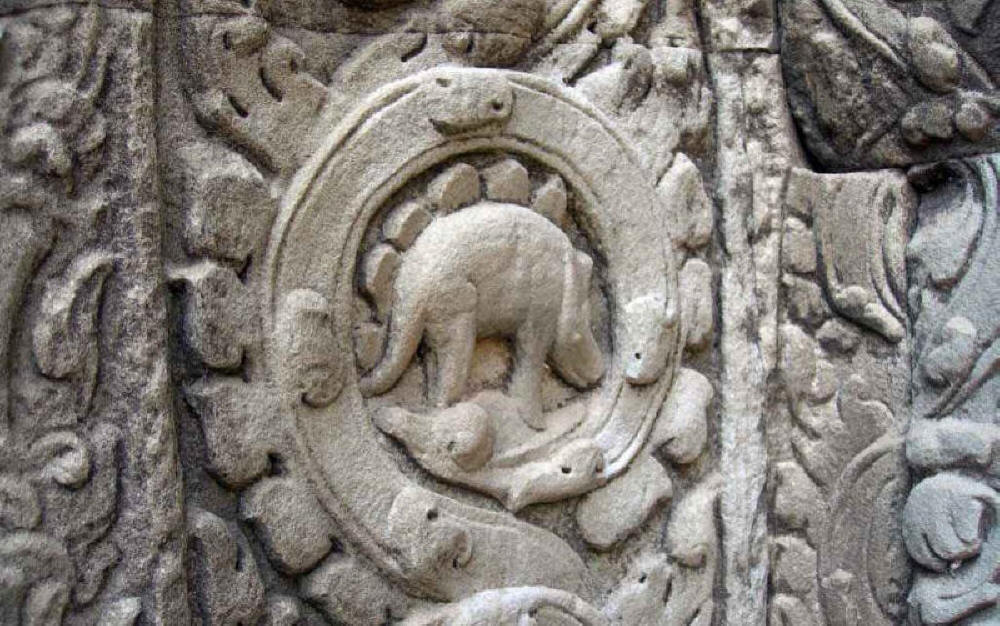
This photo is of the stunning Ta Prohm Temple deep in the jungles of Cambodia. This temple is the work of the remarkable Khmer civilization which lasted from the 800’s AD until the 1400s AD. The temple is covered with the most intricate carvings. The reader who was visiting the area noticed very distinct and clear images that seem to depict a Stegosaurus.
THE LONDON ARTIFACT
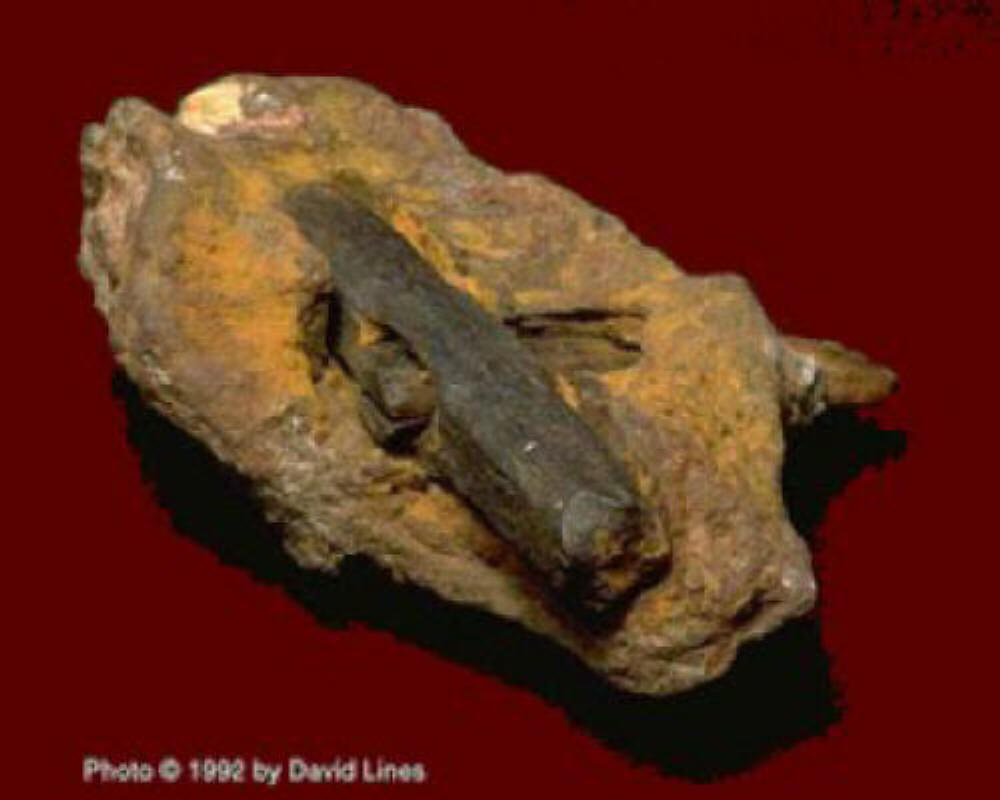
This is a hammer made from an alloy of iron which is very modern technology, encased in "10 million" year old rock which has formed around it. "This ancient tool has a simple form, similar to the type of hammer that is still common in Germany today. The handle is a very hard petrified crystal with an intact structure. It was possible to ascertain that the interior of the handle had partly turned into porous coal.
ANCIENT METAL PIPES IN CHINESE LAKE/MOUNTAIN
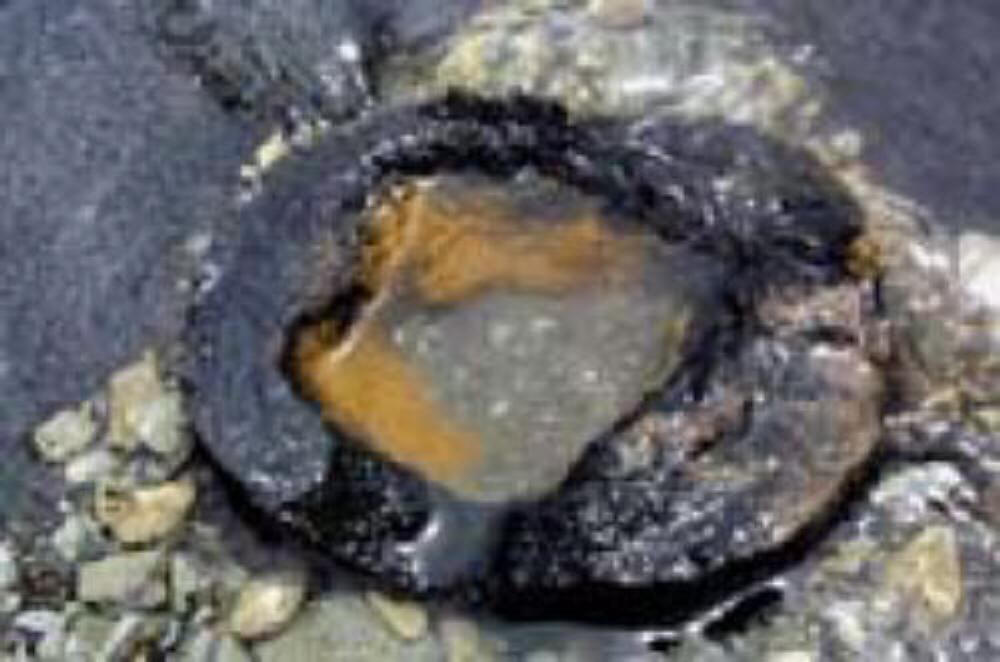

Mysterious iron pipes at the foot of Mount Baigong, located in the depths of the Qaidam Basin, Qinghai Province, have roused concern. What is astonishing is that inside is a half-pipe about 40 centimeters in diameter tilting from the top to the inner end of the cave. Another pipe of the same diameter goes into the earth with only its top visible above the ground. At the opening of the cave there are a dozen pipes of a diameter between 10 and 40 centimeters running straight into the mount, showing high fixing technique.
About 80 meters away from the caves is the shimmering Toson Lake, on whose beach 40 meters away many iron pipes can be found scattered on sands and rocks. They run in an east-west direction with a diameter between 2 and 4.5 centimeters.
More strange is that there are also some pipes in the lake, some reaching above the water’s surface and some buried below, with similar shapes and thicknesses to those on the beach.
A group of nine Chinese scientists will go to west China's Qinghai Province to closely examine the relics. According to Qin Jianwen, head of the publicity department of the Delingha government, scraps were once taken to a local smelter for analysis. The result shows that they are made up of 30 percent ferric oxide with a large amount of silicon dioxide and calcium oxide. Eight percent of the content could not be identified.
"The large content of silicon dioxide and calcium oxide is a result of long interaction between iron and sandstone, which means the pipes must be very old," said Liu Shaolin, the engineer who did the analysis.
"This result has made the site even more mysterious," Qin said. "Nature is harsh here. There are no residents let alone modern industry in the area, only a few migrant herdsmen to the north of the mountain."
DINOSAUR RELIC OF ANCIENT ITALY
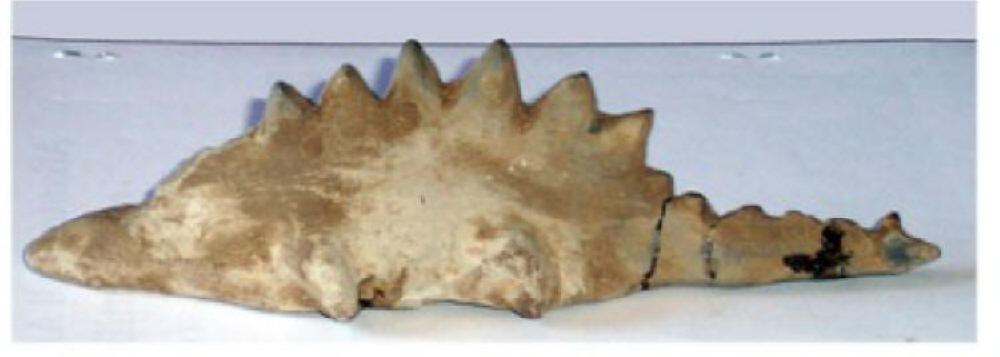
A terracotta statue approximately 18 cm in length representing a strange dinosaur/sauropod with plates on its back. The plates are triangular and continue along the back until reaching the tail. Age...Very Old.
THE PIRI REIS MAP
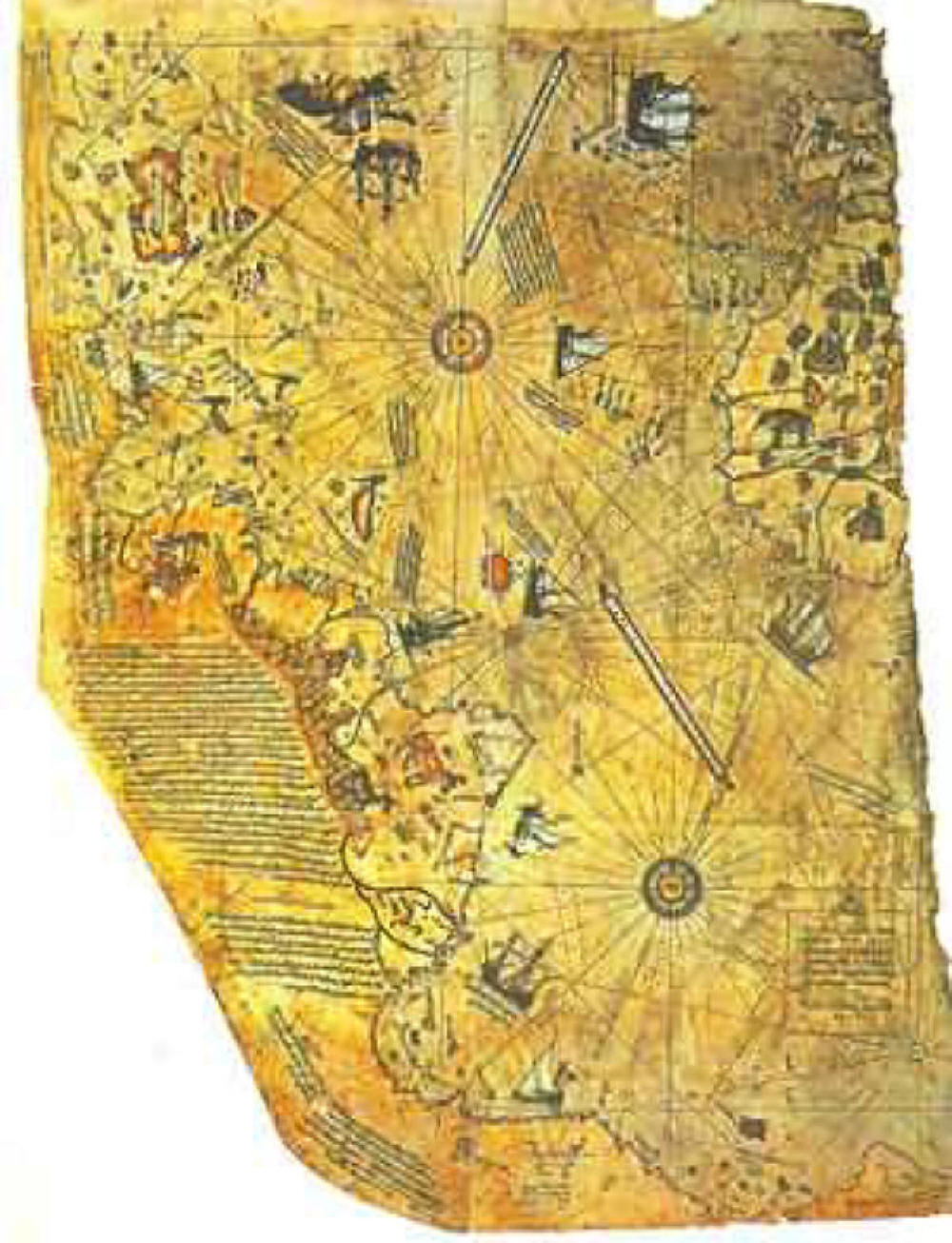
In 1929 a group of historians found an amazing map drawn on a gazelle skin. Research showed that it was a genuine document drawn in 1513 by Piri Reis, a famous admiral of the Turkish fleet in the sixteenth century. His passion was cartography. His high rank within the Turkish navy allowed him to have privileged access to the Imperial Library of Constantinople. The Turkish admiral admits in a series of notes on the map that he compiled and copied the data from a large number of source maps, some of which dated back to the fourth century BC or earlier.
The Controversy... The Piri Reis map shows the western coast of Africa, the eastern coast of South America and the northern coast of Antarctica. The northern coastline of Antarctica is perfectly detailed. The most puzzling feature however is not so much how Piri Reis managed to draw such an accurate map of the Antarctic region 300 years before it was discovered, but that the map shows the coastline under the ice. Geological evidence confirms that the latest date Queen Maud Land could have been charted in an ice-free state is 4000 BC.
Edited From - http://rabbithole2.com/presentation/ancient/ancient_artifacts_that_challenge_modern_archaeology.htm
For further enlightenment see –
The Her(m)etic Hermit - http://hermetic.blog.com
New Illuminati – http://nexusilluminati.blogspot.com
New Illuminati on Facebook - http://www.facebook.com/pages/New-Illuminati/320674219559
This material is published under Creative Commons Copyright (unless an individual item is declared otherwise by copyright holder) – reproduction for non-profit use is permitted & encouraged, if you give attribution to the work & author - and please include a (preferably active) link to the original along with this notice. Feel free to make non-commercial hard (printed) or software copies or mirror sites - you never know how long something will stay glued to the web – but remember attribution! If you like what you see, please send a tiny donation or leave a comment – and thanks for reading this far…
From the New Illuminati – http://nexusilluminati.blogspot.com
SPIRAL-SHAPED MICRO-OBJECTS FOUND IN RUSSIA....
ReplyDeleteThese are parts of guidewires; the distal and proximal ends!
Don't be fooled, they were dumped there after they were destructive-tested!
greymass2003@yahoo.com
Validation Specialist
BioTeknica
Ancient glider was mounted on ship masts and use to determent wind direction as is used today in weather cocks
ReplyDeleteCarving at Angkot Thom, Cambodia is real, there is two other creatures below it. One resembles armored dinosaur other Demon/Garuda from myths.
ReplyDeletefsbirdhouse
ReplyDeletefsbirdhouse
1 hour ago
You will notice in this video that the German engineers that produced the flying model made a colossal mistake in eliminating the wing's leading edge curlicue features.
These are found in another form (Which I have come to think may be very primitive by comparison) on nearly all modern Jet Airliners. They are a form of Slot/Slats that are deployed at take-offs and landings to increase lift at slower air-speeds and improve control of the aircraft at those times.
Dave Herbert made a far cruder TEST MODEL of the Golden aircraft in question here
substituting holes at the leading edge instead of the curlicues. Same concept, altho he didn't realize it until tested.
At minute 6:20
https://www.youtube.com/watch?v=kVPli_2-Qw4
Dave is one of the premier modelers in the country, and I'm sure realized by now exactly what he was dealing with in those leading edge features.
Although he mentions several times during his test flight that he has no down elevator/down trim left because of the tremendous lift of the wings, I'm sure he also realizes the simple fix for that on the model.
Like the German Engineers before him he split the horizontal stabilizer and elevator (Horizontal tail fins) into two pieces (As seen on his model), when he should have kept them as one solid panel pivoting in the center as seen here.
https://images.search.yahoo.com/yhs/search;_ylt=AwrTccyzKXZaIU4A9ncPxQt.?p=f-15+stabilizer&fr=yhs-pty-pty_weather&fr2=piv-web&hspart=pty&hsimp=yhs-pty_weather&type=weaff_0_ff#id=14&iurl=https%3A%2F%2Fupload.wikimedia.org%2Fwikipedia%2Fcommons%2F5%2F53%2FF_22_Raptor_Tail_Feathers_photo_D_Ramey_Logan.jpg&action=click
This would essentially more than double the control surface, giving the down elevator/down trim he needed for better control
These models do not have Dorsal fins, A Caudal fin (Tail fin below belly of fish) or Scales.
Without at least one of those, it is impossible to realize the artist's intent that it should be a fish.
Please stay us up to date like this. Thanks for sharing.
ReplyDeleteI have been reading this blog for several months and also I am very happy to get many entries from this blog
ReplyDeleteHi very nice blog!! Man .. Beautiful .. Wonderful ..
ReplyDelete
ReplyDeleteReally very beneficial tips are provided here and, Thank you so much. Keep up the good works.
Very informative blog, This blog is very easy to understand when compared to other blogs.
ReplyDeleteThanks and Best of luck to your next Blog in future.
ReplyDelete
ReplyDeleteThanks designed for sharing such a pleasant thinking,